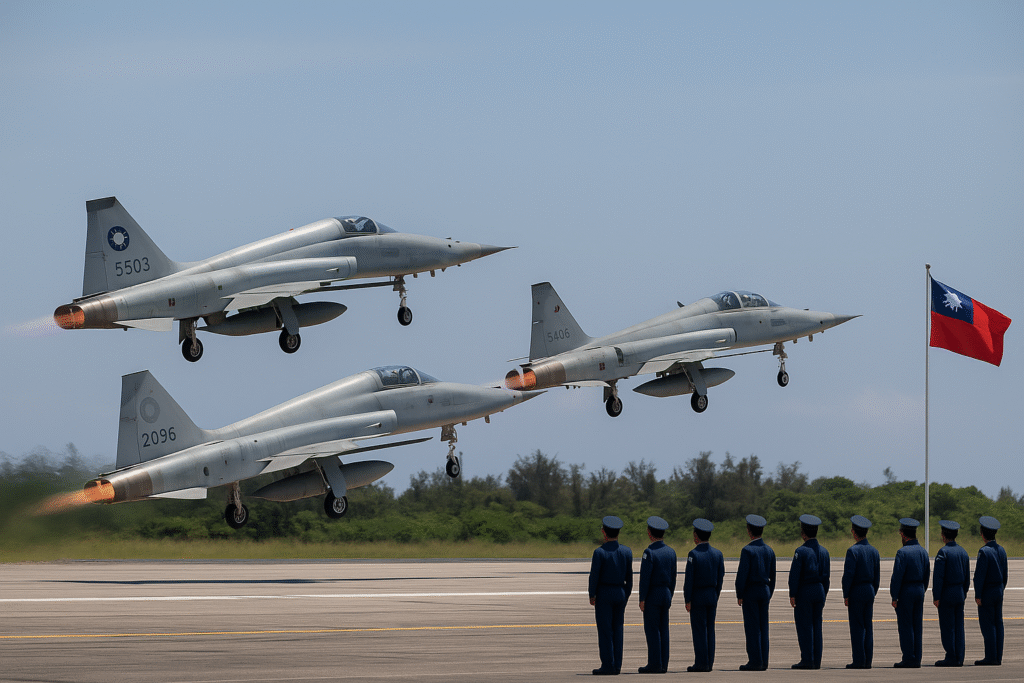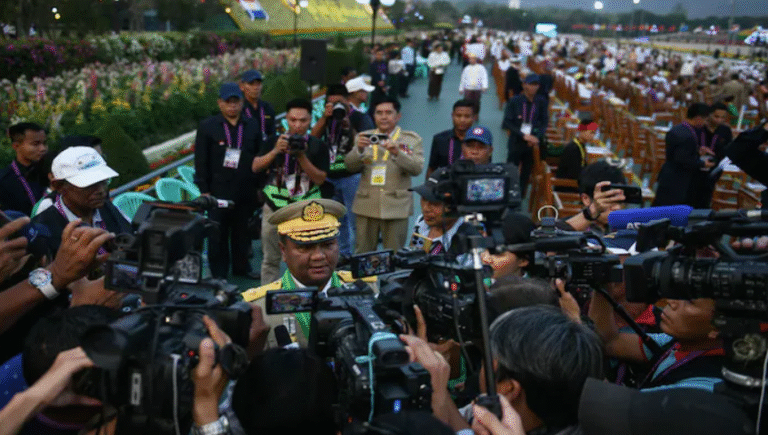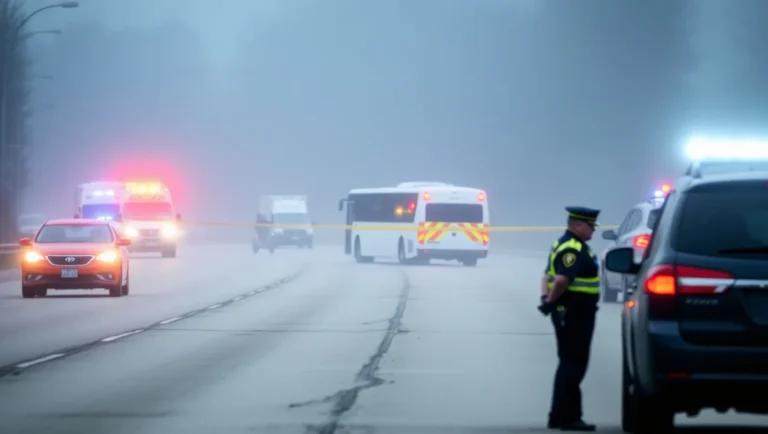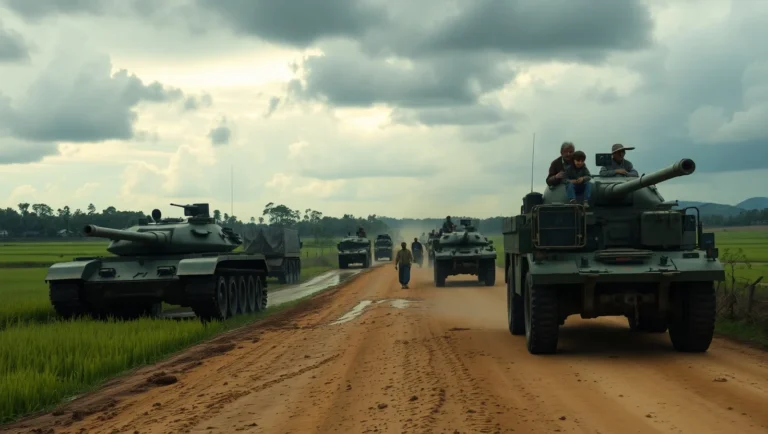
Taiwanese Air Force fighter jets stationed on the runway as part of nationwide military exercises to counter Chinese military threats.
Taipei, July 13 — In a significant escalation of military activity around Taiwan, the island’s Ministry of National Defence (MND) has reported a sharp increase in Chinese military presence near its air and maritime borders. According to an official statement released on Sunday morning, Taiwan detected 11 Chinese military aircraft, seven naval vessels, and one government ship operating around its territory until 6 a.m. (local time).
The ministry confirmed that nine of the aircraft crossed the median line — an unofficial boundary in the Taiwan Strait that has historically served as a buffer between the self-governed island and mainland China — and entered Taiwan’s southwestern and eastern Air Defence Identification Zone (ADIZ).
⚠️ Rising Pressure: What Taiwan Reported
In a post shared on X (formerly Twitter), the Taiwanese military disclosed precise numbers of incursions and their movements. “11 sorties of PLA [People’s Liberation Army] aircraft, 7 PLAN [People’s Liberation Army Navy] vessels, and 1 official ship operating around Taiwan were detected up until 6 a.m. (UTC+8) today,” the statement read.
This came just a day after Taiwan detected an even larger incursion involving 34 PLA aircraft, eight PLAN vessels, and one official ship. Of those, 25 aircraft crossed the median line and entered multiple sectors of Taiwan’s ADIZ, including the northern, central, and southwestern regions.

🇹🇼 Taiwan’s Military Responds Swiftly
In response to this growing pressure, Taiwan’s armed forces have stepped up their defensive measures. The MND confirmed that it has dispatched combat aircraft, naval vessels, and coastal missile systems to monitor and safeguard the nation’s air and maritime space.
“These repeated maneuvers not only endanger the peace and stability of the Taiwan Strait but also jeopardize regional security,” the ministry noted, while reaffirming Taiwan’s commitment to defending its sovereignty and democratic way of life.
🛡️ Military Drills and HIMARS Deployment
Coinciding with these developments, Taiwan began deploying some of its most advanced weaponry during its annual Han Kuang military exercises — a 10-day series of drills designed to simulate and prepare for a possible invasion.
Among the strategic assets showcased was the US-supplied HIMARS (High Mobility Artillery Rocket Systems), known for their precision and mobility. Residents near Taichung, along Taiwan’s central coast, reported seeing armoured trucks fitted with HIMARS systems maneuvering through city streets and strategic locations.
The deployment reflects Taiwan’s focus on strengthening its asymmetric warfare capabilities, crucial for deterring a larger adversary like China.
🌏 China’s Intention to Encircle Taiwan
Beijing has long claimed sovereignty over Taiwan, regarding the island as a breakaway province that will eventually be reunified with the mainland — by force if necessary. The recent military escalations are widely seen as a demonstration of China’s readiness to enforce this claim.
Observers believe these operations are intended to intimidate Taiwan’s 23 million residents, weaken its military resources, and signal to the world China’s resolve in what it considers a domestic issue.
Taiwanese officials, however, have maintained a firm stance. President Lai Ching-te recently highlighted China’s influence warfare and military intimidation as persistent threats to Taiwan’s freedom and democracy, stressing that these challenges would continue regardless of changes in leadership.
🗳️ Political Tensions Within Taiwan
Alongside external military threats, Taiwan also faces domestic political friction. During a recent Democratic Progressive Party (DPP) national congress, President Lai criticized the opposition-controlled legislature for bypassing constitutional procedures and undermining government operations.
He called upon the public to join in efforts to safeguard Taiwan’s democracy, emphasizing the island’s long-standing tradition of civil activism and citizen-led movements in defending its sovereignty.
📊 The Bigger Picture in East Asia
These tensions arrive at a time of heightened geopolitical uncertainty in the Asia-Pacific region, with the United States reaffirming its support for Taiwan and regional security. Military analysts warn that the situation in the Taiwan Strait could easily escalate into a wider conflict if diplomatic channels fail.
For now, Taiwan continues to bolster its defenses, relying on both domestic resources and international partnerships to counter Beijing’s growing military assertiveness.


